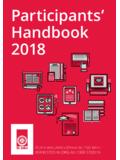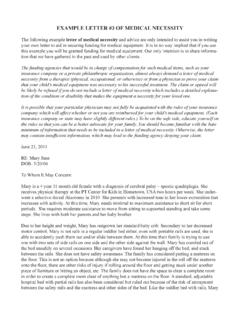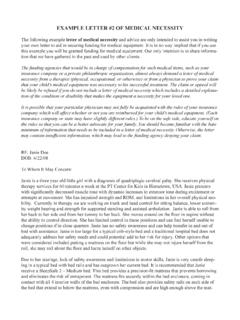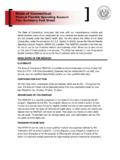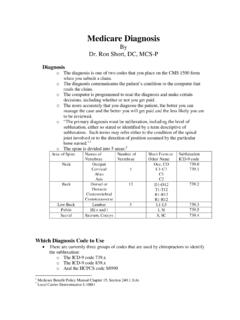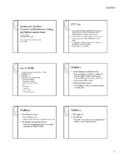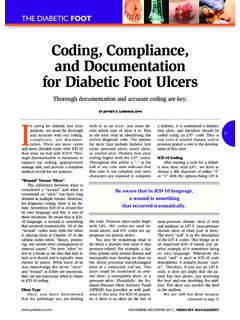Transcription of Provide an emergency first education and care …
1 Thank you for choosing St John Ambulance Australia (VIC) Inc. for your first Aid training. As Australia s leading first Aid provider, we have developed this self-directed Pre-course Review Pack to assist you to achieve the best possible first Aid training with St John. It is highly recommended that you do work through this Review Pack before attending the course even if you may have attended first aid course before. This pack includes: Information about this course and how it will be conducted; * first Aid material to assist you acquire the essential skills and knowledge you require to meet the performance criteria of this unit of competency; Assessment criteria you are required to meet to be deemed competent and gain a Statement of Attainment.
2 How does this Pack work? Simply work through the Pack. It would work best if you read through the whole pack first and then work your way through each section, answering the scenarios. The scenarios are designed to assist you with assessing your understanding of the first Aid principles of the section you have just reviewed. The correct answers are provided at the end of this pack. *This Pack is NOT a first aid text book. If you would like to refer to a reference book, you can purchase the St John Australian first Aid textbook. Call St John on 1300 360 455. HLTAID004 Provide an emergency first aid response in an education and care setting V021213 Things you should know At the face-to-face session, the material covered in this pack will be assessed with: Assessments conducted throughout the session through Question and Answers and practical demonstrations methods.
3 A 45 multiple choice questionnaire, at the end of the session. You must achieve an 80% score. It is also important that you read the Terms and Conditions included on the first Aid Training Confirmation letter. We recommend that you familiarise yourself especially with the training sections highlighted below. Training The training offered by St John provides skills and knowledge in first Aid management but does NOT constitute a medical qualification. St John accepts no responsibility for the subsequent actions of participants. Training of this nature involves moderate physical activity, including kneeling and bending. St John does not accept any responsibility for any harm suffered by you as a result of your participation in your sessions.
4 If you have any special needs (including those in relation to language, literacy or numeracy), a relevant disability or condition or any other concerns, you should raise these at the time of booking. St John reserves the right to end your involvement in a course if you fail to follow the directions, policies or procedures communicated to you by the trainer. To gain your competency, you must fulfil both the following criteria: 1. You must attend all sessions and complete all assessments to a standard deemed to be competent by your trainer. The assessment is based on interactive involvement in all aspects of your course; 2. You are required to complete a questionnaire for which you must achieve at least 80% accuracy.
5 *The information provided is accurate as of June 2014. At St John, we re about Saving lives through first AidWe aim for at least one person educated, equipped & prepared to Provide first Aid in every home, workplace & public gathering. St John Ambulance Australia (VIC) Inc. 3 WHAT IS first AID? first Aid skills are based on knowledge, training and experience. first Aid is the initial care of the ill or injured, and usually is given by someone who is on the spot when a person becomes ill or injured. The skills of first Aid are for all. The aims of first Aid are to: Promote a safe environment Preserve life Prevent injury or illness from becoming worse Help promote recovery Provide comfort to the ill or injured A first Aider should: Assess the situation quickly Identify the nature of the injury or illness as far as possible Arrange for emergency services to attend Manage the casualty promptly and appropriately Stay with the casualty until able to hand over to a health care professional Give further help if necessary INFECTION CONTROL Infection Control refers to a series of actions taken to minimise or control the spread of diseases.
6 An infectious disease is transmitted only by a specific kind of contact. Examples are measles, chicken pox, and the common cold. The following actions are collectively known as Standard Precautions: Hand Washing It is very important to wash your hands with soap and running water before commencing first Aid and when you finish. In the absence of those resources, a hand sanitiser may be used. Personal Protection Equipment Gloves and eye goggles should be worn. Resuscitation masks or face shields should be implemented when carrying out resuscitation. Health Consider being immunised. Needle stick injury - most misunderstood and often neglected as it is just a small wound. Most work places have a protocol for the management of this incidence.
7 Baseline management include: Wash the wound with soap and water, or if unavailable, wipe with an alcohol wipe or sanitiser gel; Report the incident to the appropriate person; and Immediate referral to a medical practitioner or health care worker with experience in infection control, or to the nearest hospital (with an A & E Dept.) for assessment and evaluation of potential disease transmission. Waste Management The waste contaminated with body fluid (blood, pus) produced during the first Aid scenario should be dealt with as soon as possible. They should be disposed into an infectious waste bin but if this is not possible, it should be double bagged before disposing of it in a lidded waste bin.
8 Good practice of Infection Control is even more important in a child care setting as children are very susceptible to infection. St John Ambulance Australia (VIC) Inc. 4 LEGAL CONSIDERATION Duty of Care A Duty of Care exists wherever there is a relationship between two persons. For example, between partners; between a parent and their child; between the teacher and the student; between the coach and the team player; between the employed first Aider and other employees; between the employer and clients who come into the workplace. If a person in your care becomes injured or ill, you must do something, within the scope of your training, to assist that person. Negligence An act of negligence may exist where it can be proven that: A duty of care exists; The first Aider breached their duty of care ( did something that was outside the scope of their training); and The first Aider made the person worse as a result of their actions A Duty of Care can be breached by either action or inaction ( if you do nothing and the person in your care gets worse).
9 An employer is vicariously liable for its employees acts in the course of employment . Consent to first Aid Treatment As a general rule, intellectually competent adults have the right to refuse any treatment even if that treatment is necessary to save their lives. Treatment given without the person s consent is an assault. Consent may be implied or expressed. It is implied when a person attends a first Aid room for treatment and cooperates with the first Aider. For example, if a person attends the first Aid room, holds their arm out and lets the first Aider apply a bandage. Consent is expressed when, for example, the first Aider asks for permission to apply a dressing and the person verbally agrees to treatment.
10 In some situations a person cannot give consent to treatment, for example when the injury or illness has affected the ability to make an informed choice, or the person is unconscious, very young or obviously confused. In these cases consent is not required and a qualified person may administer any necessary treatment to save the person s life or to prevent serious illness or injury. If the casualty is a child, the parent/guardian should be asked for permission but if they are not present and the injury/illness is life threatening, immediate first aid should be given. Often in an organisation Child care centres, a pro forma consent is obtained on enrolment. Treatment without consent will be justified when: There is a necessity to act when it is not practicable to communicate with the casualty, and The treatment is reasonable ( what a reasonable person, given the level of training completed, would do in the circumstances) In these cases the treatment may be given even though the person has not, and cannot, give consent.
